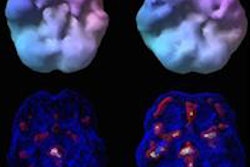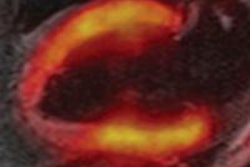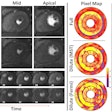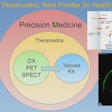Using PET imaging, researchers at NYU Langone Medical Center have found a connection between the quantity of cannabinoid receptors, known as CB1 receptors, in the brain and post-traumatic stress disorder (PTSD), according to a study published online May 14 in Molecular Psychiatry.
The study divided 60 participants into three groups: those with PTSD, those with a history of trauma but no PTSD, and those with no history of trauma or PTSD. Individuals in all three groups received a radioactive tracer that illuminates CB1 receptors when exposed to PET scans.
Results showed that subjects with PTSD, especially women, had more CB1 receptors in brain regions associated with fear and anxiety than volunteers without PTSD. The PTSD group also had lower levels of the neurotransmitter anandamide. If anandamide levels are too low, the brain compensates by increasing the number of CB1 receptors.
Lead author Dr. Alexander Neumeister, director of the molecular imaging program in the departments of psychiatry and radiology at NYU School of Medicine, and colleagues are the first to demonstrate through brain imaging that people with PTSD have markedly lower concentrations of anandamide than people without PTSD, according to a statement from NYU Langone.
There is no pharmacological treatment that has been developed specifically for PTSD, Neumeister said, and there is a consensus among clinicians that existing pharmaceutical treatments, such as antidepressants, do not work.
The study will be presented this week at the Society of Biological Psychiatry annual meeting in San Francisco.




















